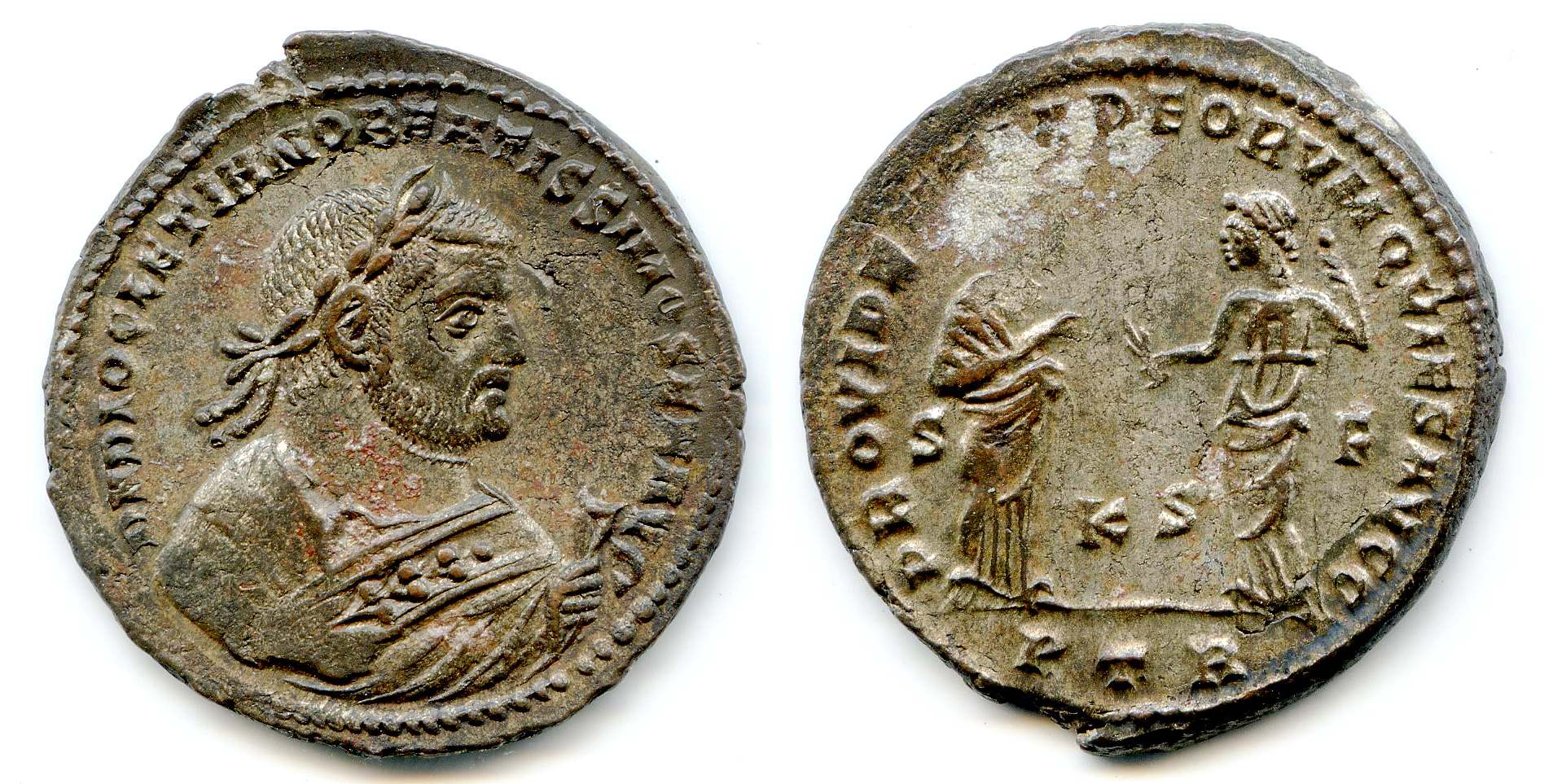Diocletian
Roman Emperor, 284-305 AD

Follis, copper showing through silver
wash, 27 mm.
Obverse: Bust of Diocletian wearing mantle and holding branch and mappa.
Reverse: Quies and Providentia facing each other.
Minted in Trier, Germany, c. 305 A.D.
This coin was issued to commemorate Diocletian's abdication; Quies is the
personification of rest and retirement.
Diocletian, one of the ablest Roman emperors, was born in the province of Dalmatia around AD 245. From a family of limited means, he rose through the military ranks to become commander of the emperor's bodyguard and was chosen by his fellow soldiers to succeed Numerian as emperor in 284.
Diocletian was no ordinary soldier. Recognizing that the task of governing the Roman Empire had become too taxing for one man, he divided the empire into four administrative districts and agreed to share the management of these with three colleagues -- Maximian, Galerius, and Constantius I. By 298 this tetrarchy (rule of four men) had suppressed rivals within the empire and had defeated the barbarian tribes and the Persians who threatened the border provinces.
A remarkable administrator, Diocletian sponsored a series of reforms to rehabilitate imperial institutions. He reorganized provincial administration and imposed a uniform system of taxation. He increased the size of the army and made it more mobile. He attempted to halt inflation by reforming the coinage and issuing an edict -- unique in Roman history -- that prescribed maximum prices and wages.
Diocletian was faithful to the traditional Roman gods (he was not a sun worshipper like the emperors he succeeded), and ordered extensive persecution of the Christians.
In 305, Diocletian voluntarily abdicated and retired to his magnificent
palace at Salona (in modern-day Croatia). He refused to participate in the
civil war that followed his abdication, and appeared in public only once more,
to settle a dispute among the new rulers of the empire. He died at his
palace in 311 AD.
Return to Main Page